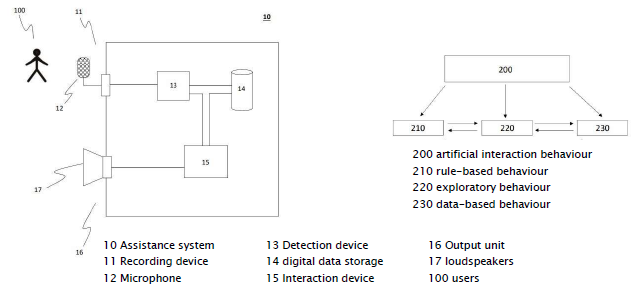Empathic human-machine interaction
Kurzbeschreibung
The present invention assistance system and corresponding methods help to simulate the interaction with an assistance system as humanly and naturally as possible, in order to maintain the acceptance of the information acquisition even during longer conversations.
Beschreibung/Hintergrund
The basic idea of an assistance system regardless its field of application and intended function is to support its users in certain activities and objectives. Furthermore , such a system should also offer a natural interaction to allow an easy use of assistive abilities. Such a system either as device, tool or service is a keystone of modern human-machine interaction. The current state of the art especially in the field of virtual assistance systems is capable of (simple) automations and data queries. There is a tendency from simple textbased settings, which relate to desktop systems to systems that can be used in real settings. Unfortunately, there is still a gap between this representation and the underlying behavioural concept (as an overlapping control paradigm) and communication skills.

Lösung
The need to simulate the interaction with an assistance system as human and natural as possible in order to maintain the acceptance of information acquisition even during prolonged conversations can be satisfied with the presented inventive assistance system and corresponding procedure. Therefore, the interaction device (15) implements an artificial interaction behavior (200) simulating different behaviours when interacting with the user. The different behaviors distinguish in the type and/or content of the generated interaction- related output information. Each behavior is assigned to a specific behavior mode of the interaction device, whereby the interaction device is configured to change the selected behavior mode (rule-based, exploratory or data-based) during an interaction. Therefore, it is possible for the assistance system to adapt its behaviour during an interaction with the user by changing the behaviour of the assistance system. For this purpose, a corresponding behavior mode is automatically selected in order to change the type and/or content of the generated interaction-related output information. This allows the interaction to run as natural and human as possible. The assistance system can adapt to the behaviour and reaction of the user with whom it interacts, in order to increase the user's acceptance.